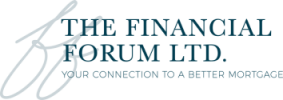Home Buyer Tips
Know exactly how much you can afford for your down payment and closing costs.
You can purchase a home with as little as 5 percent down. With a down payment of at least 20 per cent you can avoid costly mortgage loan insurance. Ensure you look at all methods to fund your down payment including withdrawing from your RRSP under the “home buyers plan.”
Get pre-approved
This should be a standard. It’s very wise get a pre-approval so that you are clear on how much financing you can afford and if the payments, rate and terms meet your expectations. Ensure that your pre-approval incudes a credit check and that your income and down payment is verified so that there are no surprises. With a firm pre-approval you can put in an offer without fear that your financing could fall through due to non-property related issues.
Understand your affordability
Certain rules apply to lending ratios when granting credit. The amount you actually qualify for may be more than you can afford without compromising your desired lifestyle. It pays to do your own budgeting to determine what you think you can afford each month.
Budget for present and future
We are in an unprecedented period of low interest rates. Unfortunately, this will not last forever. Do some forecasting to see what your mortgage payments could be if rates go up one, two or even three per cent. It’s best to be prepared.
Plan for renovations and repairs
Nothing lasts forever. Your home will need “TLC” and renovations from time to time. This keeps it fresh and your investment at top dollar. It also makes your home special to you. Not planning in advance for these expenses can lead to much larger expenses in the future. Again, plan ahead.
Refrain from bidding wars unless you are absolutely sure
Homes are selling thousands of dollars over list price in many areas. This means you may pay more than the appraised value for your home. If the value is not supported, you may need more financing or worse, more down payment that you may not have available. Don’t make a firm offer in a bidding war unless you are sure of your financing.
Ownership Structure
Whenever you purchase a home with another person, including a spouse, you should consider ownership structure. Sometimes, it may make sense to put the home in only one of your names. This is most often done for creditor proofing in the case of business owners or professionals. You should consult with a tax or legal professional. Same is the case if you are considering guaranteeing a mortgage or co-signing for a mortgage. Should you go on title?
Mortgage Life and Disability Insurance
Get It! Your family relies on you and your income to make the mortgage payments. You therefore should have life and possibly disability insurance. This is an option when you sign up for your mortgage and should seriously be considered.
Review your payment plan at least annually
Each year or less, you should review your mortgage payment plan. Can you make a pre-payment? Can you increase your payments? Can you shorten the amortization? Is there an opportunity to lower rate? Are there high interest debts that need attention? Can you increase the frequency of your payments from monthly to bi-weekly or weekly to pay off your mortgage faster? Any of these options can save thousands in interest costs.
Don’t forget to pay yourself
Remember how hard it was to save for your down payment? Keep doing it! Just because you’ve saved enough for a down payment and purchased your home doesn’t mean you stop saving. Make sure you have an emergency fund and try to save enough for other investments, upkeep and life’ surprises. That is all part of the home ownership plan.
